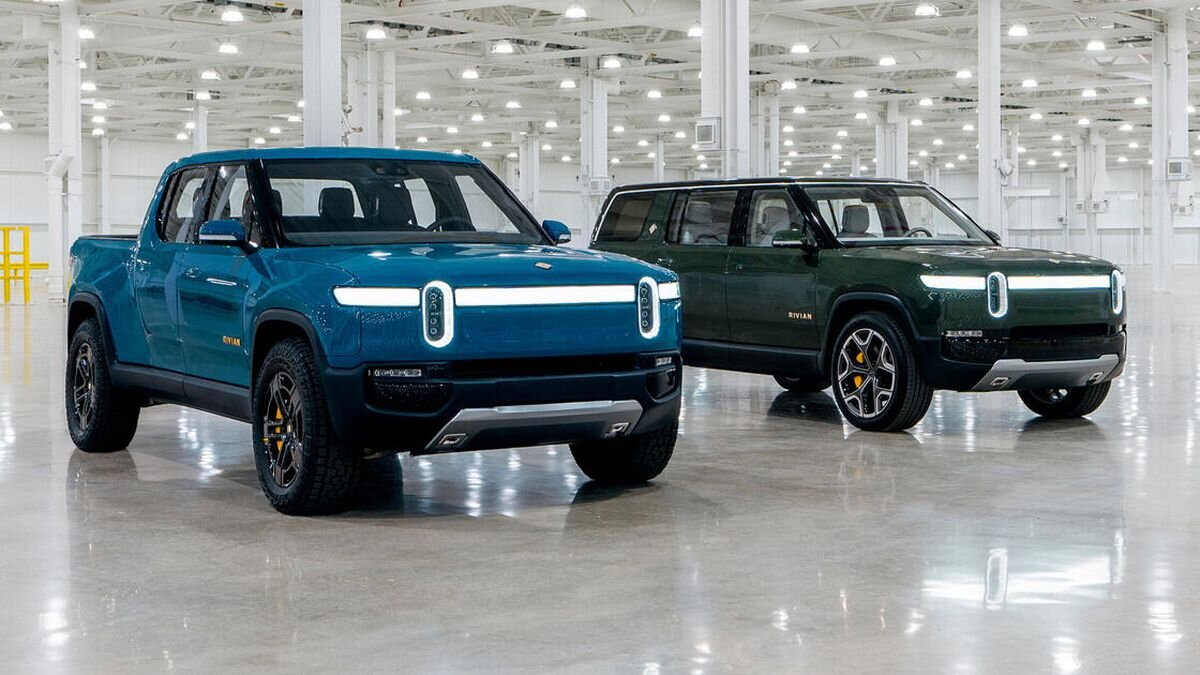Will Vehicle-to-Grid help power our RE future?
Image credit here
Electric vehicles or EVs are about to catch on with consumers in a big way. Most estimates show that new EV sales represent only a single-digit percentage of all new car sales in the U.S. but that is going up sharply. More positive forecast announcements from large existing manufacturers like GM are coming every month and the new EV entrants like Fisker and Rivian are quickly growing in number.
The standard EV news headline is often followed up by stories that draw attention to the electricity grid that we will use to charge all these vehicles. More importantly, we must address the question of whether we can supply enough clean, renewable electricity to the grid to prevent a new generation of EVs from generating even more harmful greenhouse gases as a result of burning more coal and natural gas.
But what is not often discussed are all the new possibilities that will be available when we wholesale buy into an all-electric or more specifically, an electric battery-powered transportation future. One fascinating option is the idea of using your car as a source of power beyond moving you from place to place. That’s where V2G comes into play.
What is Vehicle to Grid (V2G)?
Vehicle to grid describes the non-traditional flow of electricity from your car to the electricity power grid.
It is fair to assume that most people understand that we will be charging our new electric cars by plugging them into the existing power grid. For most, that will be using an existing outlet in your home or garage. Many EV owners are now opting to install a separate fast charging unit which significantly reduces the time it takes to recharge your car’s batteries.
You will also see more options for charging outside the home. Parking garages and lots are now offering dedicated charging stations for EV car owners, anticipating and even accommodating what seems like an inevitable change in how we commute. There is also a massive effort underway, recently boosted by new proposed legislation, to create an EV charging network that spans the country and that will support a whole new population of electric car owners cross-crossing the states on longer drives.
Electric car charging stations will become ubiquitous. Image credit here.
As the EV charging technology scales and evolves, it is getting smarter about when to charge your car, e.g., to take advantage of lower electricity rates during off-peak hours. But increasingly, there are options for completely reversing the flow of power such that the Grid is able to tap your car’s battery and actually pull electricity back, perhaps to help temporarily offset unexpected high demand.
Can a single car really help the Grid in a power emergency? Probably not. But people that are pushing V2G are not thinking about individual cars. They are imagining millions of EVs that can be dynamically pooled together on demand.
And this kind of thinking doesn’t stop with just pushing power back to the Grid. There is similar research and development focused on vehicle-to-home and vehicle-to-building, all lumped under a single acronym, V2X.
Consider for example, an entire city garage filled with EVs that collectively, provide many kilowatts of available, idle power. The ability to aggregate hundreds of fully charged car batteries that are otherwise not being used can enable new energy solutions. For example, the building that contains the garage may choose to pull energy from its parked cars & trucks to help offset costs when the grid’s rates are higher.
Are EV owners considering this?
I wrote an article here that outlined some of the common criteria people are using when considering buying electric cars and hybrids. None of them mentioned the benefits(?) of sharing their car’s electric battery with buildings, much less with the national grid. So, while this may not weigh on consumers’ minds at the moment, I do think it is worth pointing out that as solar panel installations became more prevalent, the very same option began to gain popularity, that is, selling excess energy produced by the panels back to the utility. In another article, I relayed a conversation with friend who was enjoying a negative electric bill thanks to the solar panels installed on his sunny Southern California roof.
The solar panel rooftop movement has launched adjacent product categories including larger-scale home energy battery storage. Tesla has a separate business that pairs its Powerwall Lithium-ion battery with solar panels to store energy at the home, primarily to handle power fluctuations or full-blown outages in the electric grid. This additional investment may not be so obvious or accessible to many, but the concept is virtually identical to the vehicle-to-home scenario.
During the harsh winter storm of 2021, there were quite a few reports of residents who had lost power to their homes and who turned to their Teslas to run their home appliances during the outages!
Wallbox Quasar is targeting vehicle-to-home power solutions. Read more here.
Indeed, there are products that are now being launched that will make this option even more intentional and at some point in the future, EV owners may benefit from more than just quiet, cleaner, more reliable transportation. They might actually become their own micro-utilities and extend the benefits of renewable energy to help drive the Energy Transition.




